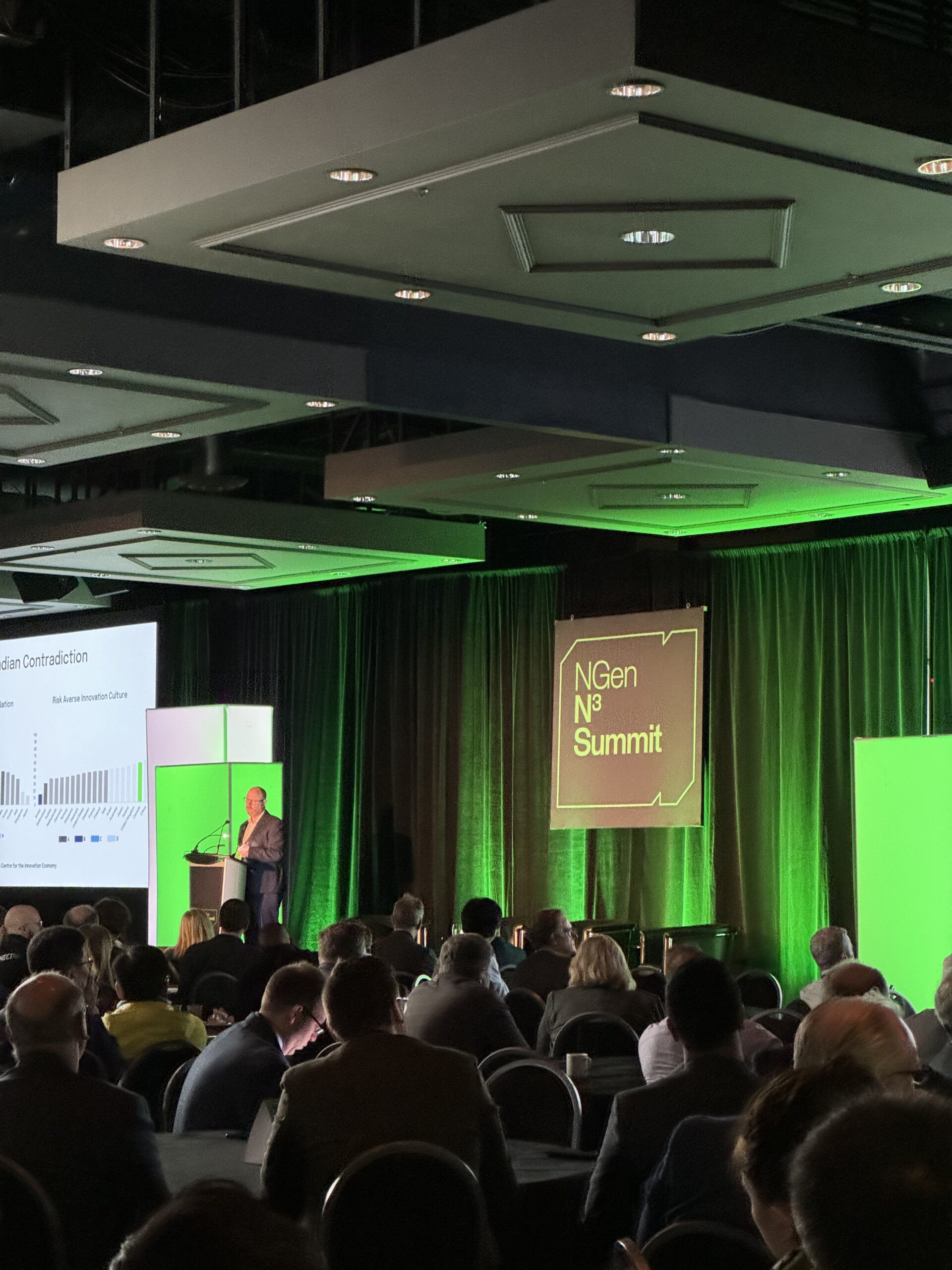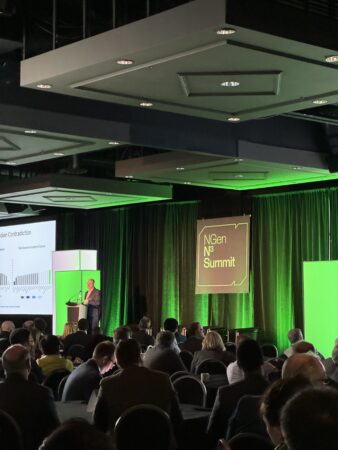
N3 Summit tackles the labour shortage, electrification transition through Industry 4.0 technologies
February 14, 2024
By
Sadi Muktadir


On Feb. 8, NGen’s N3 summit welcomed close to 500 people from across advanced manufacturing for a day of talks, meetings and sessions centred around the manufacturing industry’s ongoing transformation through advanced technologies.
The key themes centred around the electrification and clean energy transition taking place across the manufacturing industry, and what manufacturers were doing to alleviate their labour shortages.
They keynote address was delivered by Linda Hasenfratz, CEO of Linamar Corporation, a global manufacturer with a footprint across North America. Linda mentioned the sustainability efforts that were taking place across the company’s facilities through the use of automation technologies optimizing personnel usage, and the company’s work in emphasizing the acquisition of diverse talent in its corporate strategy.
Linda emphasized the need to use advanced technologies and automation to also offset the cost of inflation and a supply chain with a global footprint. According to Linda, Linamar’s EV value chain has been set up to assess improvements through R&D efforts that are constantly reviewed.
A number of SMEs and start-ups were also asked about what their companies were doing to tackle the labour shortage, and how strongly they felt there was one.
Precision Resource Inc., is a components supplier with a global reach, and Kaveh Vafaei, a Managing Director, mentioned some of the unique challenges working in advanced manufacturing and how the labour shortage can sometimes boost automation and innovation.
“Having access to skilled labour from other parts of the world is great, but this also includes less of an incentive to improve productivity. Our plants in the Eastern and Western U.S. has trouble sometimes to find talent. This forced us to push for more productivity through automation and A.I., which is great. It makes us more productive, but it’s also challenge for other regions like Canada.”
Another corporate leader, Gurkaran Chowdhry, the Director of Business Development at 3D BioFibR, spoke about the labour challenges at a small, advanced manufacturing startup.
3D BioFibR is a team manufacturing collagen fibre to assist in medical applications in surgeries. The company works with recombinant protein manufacturers to create new materials that have broad applications even outside of medicine.
“Talent acquisition and talent retention is challenging. On the East coast it’s even harder. We’re in Halifax, N.S. where we know there’s a high cost of living. We try and offer competitive compensation, but we also try and accept applicants on a rolling basis and leaving opportunities open for a long time so we can find the best fit.”
When asked what talent retention looked like, and what some of the key reasons were for employees leaving, Gurkaran mentioned team members who had left for work that was more relevant to their field of focus or study.
“They found a job that was more aligned with their technical expertise, they both found options that were more call to actions for the areas they were trained in,” he said.
Manufacturing is currently undergoing a face lift, trying to appear more lucrative and attractive to top-end talent, and in one morning session, Jarred Knecht, President at Promark Electronics, mentioned as much.
“We’re trying to make manufacturing sexy again. The work has to be interesting to the new generation of workers. Every business has to take it upon themselves to make their work more interesting and attractive to compete against the tech and software industries,” he said.
NGen’s N3 summit brought together industry leaders to discuss shared challenges and goals, and connect in an effort to grow the advanced manufacturing footprint in Canada.


